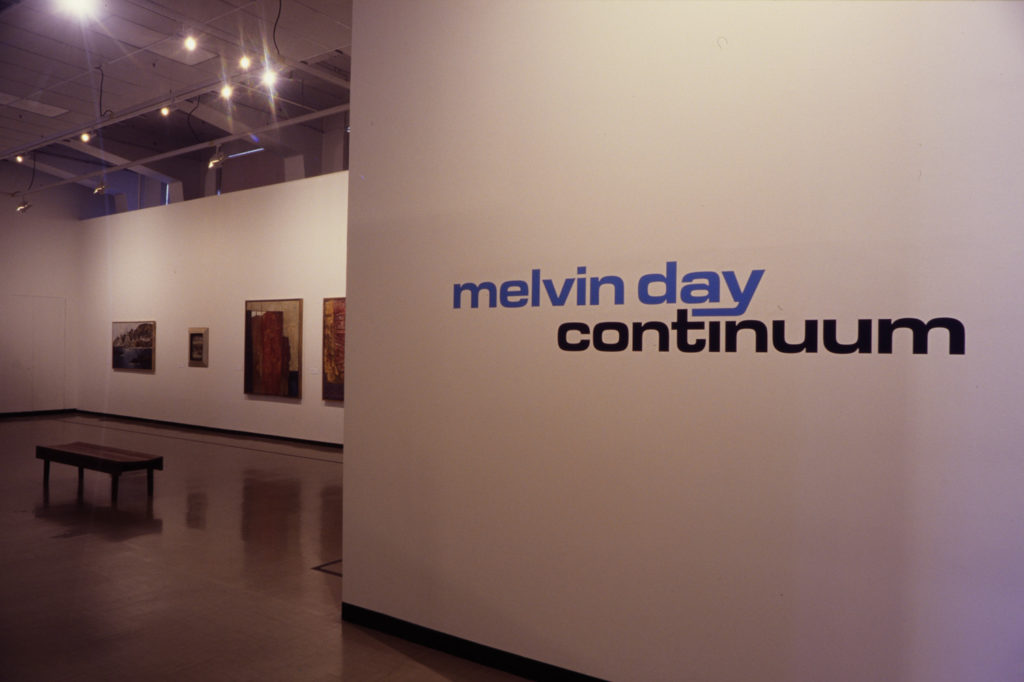CURATOR Gregory O’Brien SPONSOR Montana Wines PUBLICATION essays Gregory O’Brien, Mark Hutchins
Continuum surveys the work of senior Wellington artist, Melvin Day. It's his second big show at the gallery, following Full Circle in 1984.
Born in Hamilton in 1923, Day begins Saturday-morning art classes at Elam School of Art, University of Auckland, at the age of eleven. In 1939, he goes on to study as a full-time student, graduating with a preliminary diploma in fine arts two years later. Apart from a brief period at the Auckland Teachers’ Training College, he spends the remaining war years in the New Zealand Army and Royal New Zealand Air Force. Due to his drafting abilities, he works on topographical and landscape views of the Matakana area and Mototapu Islands.
Early on, cubism is a huge influence. His painting Māori Meeting (c.1949) melds cubism with tukutuku patterns. After a few years teaching and painting in the Rotorua area, Day arrives in Wellington in 1954 and commences a BA at Victoria University of Wellington while teaching at Hutt Intermediate School. From the late 1950s, he exhibits widely in New Zealand and his work is included in the 1961 Commonwealth Art Today show at London’s Commonwealth Institute. In 1963, he enrolls at the Courtauld Institute of Art, London, being the first New Zealander to be admitted. There, he develops a fascination with the geometric precision of the Italian Renaissance painter, Paolo Uccello. In 1968, he returns to New Zealand, to Wellington, to take up the position of Director of the National Art Gallery (now Te Papa). During his ten-year tenure, he buys works by living New Zealand artists, including Colin McCahon, Pat Hanly, and Don Binney. In 1978, he becomes Government Art Historian. In 2003, he is made CNZM in recognition of his contribution to New Zealand art.
As a painter, Day is informed by art history. He explores ways early-Renaissance ideas might offer opportunities for contemporary art. His Uccello series (1969) reconciles that artist's spatial concerns with flat-surface modernism. His Titus Andronicus series (1979) addresses notions of authority and abuse of power. The Triumph of the People: Mantegna series (1980), painted after the 1975 Māori Land March, is a meditation on politics and the population. In 1989, Tony Eden writes in Insight: ‘I believe that he is undervalued because few people have sufficient mental grasp of art history to recognise the deeply philosophical roots in his work.’
Continuum exhibition curator Gregory O’Brien writes, ‘Within Day’s oeuvre, a number of dialectics can be discerned; between theory and practice, past and present, untrammeled nature and human order, organic form and geometry. The ebb and flow of these concerns provide the inner dynamic—a continuum.’
















































